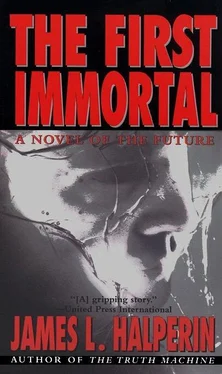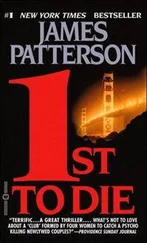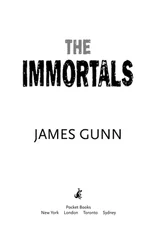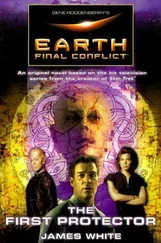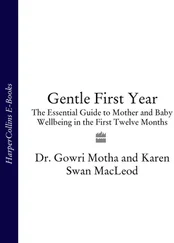“I’ve had other things on my mind lately,” Rebecca said.
Gary realized how much he enjoyed telling the story to his sister, but he’d also noticed a melancholy cast to her mood. “You know, I’ve missed you,” he said.
“Me, too.” Rebecca stared back at him. “Gary, how did it all get so screwed up?”
“Too much money in that trust, I guess.” Too much greed, he thought. Too much self-serving counsel; not enough understanding. “Hard for some people to resist,” he added, with only a nuance of bitterness.
“I guess. So sad, isn’t it? We put ourselves through all that grief, and the lawyers end up with the money.”
“Yeah, and not even esquires Noah and Jan. Which serves them right, I suppose.”
“What’s so ironic, though, is that when Dad was alive, he was impossible to bamboozle. Biggest skeptic alive; and one of the smartest. But the second he dies, his own lawyer empties his wallet like a common pickpocket.”
“Except that it was a hundred percent legal, best I can tell. And we helped him do it.”
“There’s nothing at all left in the Trust, is there?”
He noticed a plaintive luminescence in her eyes. She was not asking simply to make conversation. Of course! She needed money. “No. It’s all gone.” Gary was a careful man, so he paused several seconds to think before asking, “Why?” the question proof to himself that he still cared for his sister.
“Well, Katie hasn’t been herself over the last few months.”
“Katie? Tell me what that means.”
“It was nothing in particular, no fever or anything, but you know how energetic she always was. And gregarious. But since November she’s become lethargic; sleeping eleven or twelve hours a day; losing weight, too. Which she could hardly afford to do. So finally we took her to one of Max’s partners.”
“And?”
Rebecca delivered the grim words without tears: “Katie has cancer of the pancreas. Just like Mom.”
“Oh my God!” Gary sat back and stared at the wall above his sister’s head. He thought of his mother’s death some twenty years earlier, and what they’d all gone through, he perhaps most of all. And now his beautiful niece Katie had it? A goddamn death sentence! She was only… ? Jesus; twenty years old.
“How long?” he asked, before recognizing his query’s ambiguity.
“We’ve only known a few days. The doctors say she probably won’t last the year.”
He reached over the table, put his hand on hers and waited for the rest of it.
“Gary, she wants to be frozen with her grandfather.” The words seemed to tumble out of her. “And the thing is—oh, Gary, I wouldn’t blame you if you slapped my face—the thing is, I want it for her, too. I’m not ready to abandon my little girl for dead.”
October 31, 1999
—The Department of Public Health releases their latest AIDS statistics, and calls them “encouraging.” The average life expectancy of a North American or European infected with HIV now exceeds 17 years.—California becomes the first state to outlaw “private smoking clubs” that accommodate more than 20 members at a time, closing a loophole that has allowed many large restaurants and even certain small companies to circumvent federal law. Cigarette smoking has been illegal in all public places throughout the USA since H.R. 1712 went into effect on April 10.—Senator Travis Hall (R. CT) challenges the Democratic-controlled Congress to attack the crime problem by “taking power away from manipulative defense lawyers, and putting it back in the hands of victims and potential victims.”—President Clinton signs into law a bill first proposed by Nicholas Negroponte, the Cyber Corps Act, which will allow several hundred thousand young men and women from the United States and other developed nations to spend one to two years each teaching third world children how to become part of the digital world. The program is expected to empower 100 million school-age children at “roughly the cost of nine F-15s.”
Halloween, before it evolved from the Celtic festival of Sambain, was a far more significant holiday than it has become in modern times. Back then, October 31 was also the eve of the new year, and in Celtic lore, a time to appease the forces that directed the processes of nature. Ghosts of the dead were thought to look in on their earthly residences, and the autumnal festival took on a sinister quality, as a time when malignant spirits emerged. It was also said to be the ideal day to prognosticate future soundness of the body and mind, reversals of fortune, marriages, and death.
October 31 was about to become the date of one of the most famous suicides in American history; a suicide that all seven persons present hoped would prove reversible.
Gary had rented a small but comfortable cabin near Rochester, Michigan, a town of 7,500 some twenty-five miles north of Detroit. The location seemed ideal. First of all, it just barely fell within Oakland County, where Dr. Jack Kevorkian had observed or assisted dozens of suicides, and with whose legal machinery Kevorkian and his lawyer, Geoffrey Fieger, were intimately familiar. Second, the three technicians from the Phoenix would have near perfect conditions under which to prepare the body, once legally dead, for immediate transport just nineteen miles southeast to the Cryonics Institute in Clinton Township, where it could be perfused, frozen, and moved to Arizona at everyone’s leisure. C.I. was a small, nonprofit facility founded in 1976 by Robert Ettinger, author of The Prospect of Immortality.
Such planning, and teamwork between competing organizations, was a rare luxury in twentieth century cryonic suspensions. Unfortunately, some of the personnel employed by the half-dozen or so legitimate cryonics facilities had recently become inordinately cutthroat, which had impeded the already-slow incursion of cryonics into general public acceptance. Internet “newsgroups” in particular had become an embarrassment to the cryonics field, with scientists and medical personnel from various organizations constantly posting “flames” about the techniques and policies of other facilities.
In truth, the entire field was still so plagued by lack of research funding that virtually all techniques, as well as any criticisms thereof, were merely theoretical. At the time, research into the long term preservation of transplantable organs such as kidneys and livers received hundreds of times the funding granted to similar research on such a uselessly dependent organ as the brain.
The Phoenix and C.I., while not the closest of allies, were wise enough to recognize the public relations opportunity of inducting the niece of Gary Franklin Smith into their registers. With heightened public awareness would come increased demand, and thus increased funding for research, the holy grail of every cryonics organization.
For many reasons, not the least of which was to eradicate any doubt of the patient’s intentions, Dr. Kevorkian videotaped the entire event. To avoid potential litigation, the three technicians from the Phoenix waited in their ambulance, aware of but not formally informed as to the goings-on inside the cabin.
The patient was my aunt, Katherine Franklin Crane. She reclined comfortably on a hospital bed installed the day before her arrival. Katie’s body had withered to seventy-eight pounds, but her face retained a roseate sparkle. The disease had not yet progressed to where pain could no longer be managed by medication, or where the mind was of diminished use. Tonight she displayed a calm optimism bordering on exuberance. All was going according to plan.
“Now, Katie,” Dr. Kevorkian said, “do you wish to continue your life?”
“No, not now.”
“Not at all?”
Читать дальше
